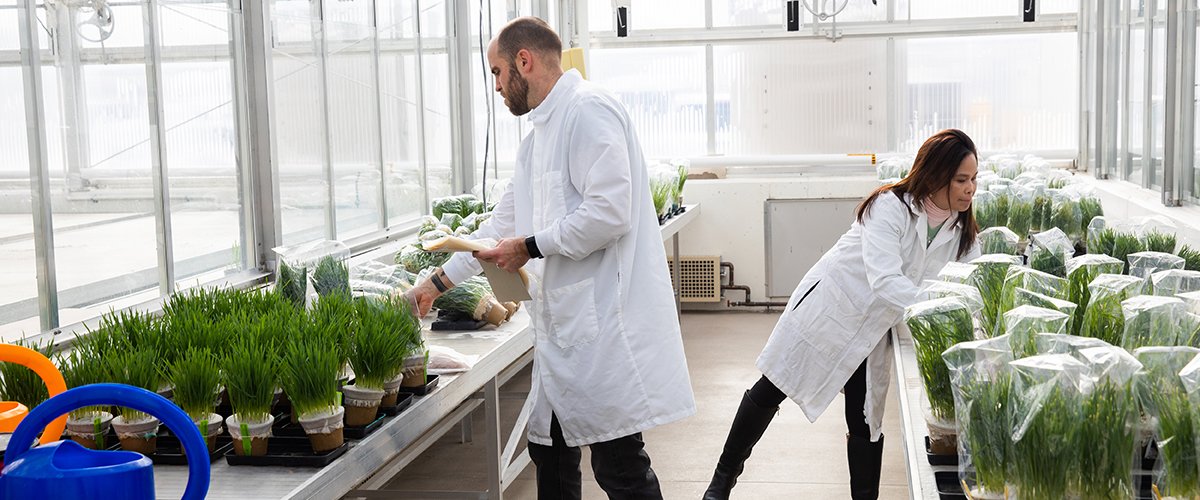
A closer look at the Cereal Disease Lab
The Cereal Disease Lab on the U of M’s St Paul campus is led by the USDA’s Agricultural Research Service in close collaboration with the CFANS Department of Plant Pathology. This collaborative relationship between the University and the USDA goes back over 100 years.

The mission of the Cereal Disease Lab (CDL) is clear: to reduce losses in wheat, oat, and barley to major diseases including leaf rust, stem rust, and Fusarium head blight. These fungal diseases are some of the most damaging diseases among cereal crops. In extreme cases, cereal diseases cause yield losses as high as 50%.
While that mission seems simple, preventing cereal diseases, especially rusts, is tricky.
Rust diseases have the ability to become airborne and move across regions and continents. In fact, cereal rust fungi are superbly adapted for long distance spread. With the right wind patterns, a wheat rust outbreak in Texas can sweep north all the way to Manitoba, Canada, infecting the wheat crops grown in all the states along the way.
Despite that, the most dangerous characteristic of rust pathogens is their ability to change and become more virulent, or severe, in response to previously resistant varieties. This means small grains breeders can work for years to develop varieties resistant to a particular strain of rust, but that work can be quickly wiped out by a shift in the rust pathogen populations.
At the Cereal Disease Lab, USDA researchers work closely with faculty, staff and students in the CFANS Department of Plant Pathology to better understand the biology of the pathogens and prevent disease outbreaks. Researchers collect and analyze thousands of pathogen samples from across the U.S., as well as from many other countries, for changes in pathogen populations.
“We work with emerging virulent races of cereal rust pathogens from around the world, notably with strains such as Ug99 and other virulent stem rust pathogens,” says Matt Rouse, who holds a joint appointment with the USDA and the Department of Plant Pathology. “We're the only place in the United States working on virulent races in a large capacity and one of few institutions in the world.”
The CDL also screens germplasm from breeding programs to assist in the development of resistant varieties, screen wild cereal germplasm for resistance to incorporate in breeding programs, screen commercial barberry varieties for resistance to stem rust since barberry can be an alternate host for the disease, and conduct detailed research on the genetics/genomics of both the pathogen and the host cereals to reduce the damaging impact of these plant diseases.












